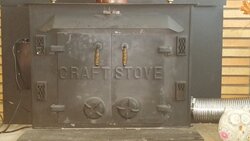I live in NC and have an older Craft stove insert. I currently close the flue to about 25% and then control the fire with the front dampers. I find that by closing the flue it burns slower and keeps the heat in the firebox better. Am I thinking right or should I be opening the flue all the way?
Controlling heat
- Thread starter Policeman510
- Start date
-
Active since 1995, Hearth.com is THE place on the internet for free information and advice about wood stoves, pellet stoves and other energy saving equipment.
We strive to provide opinions, articles, discussions and history related to Hearth Products and in a more general sense, energy issues.
We promote the EFFICIENT, RESPONSIBLE, CLEAN and SAFE use of all fuels, whether renewable or fossil.


